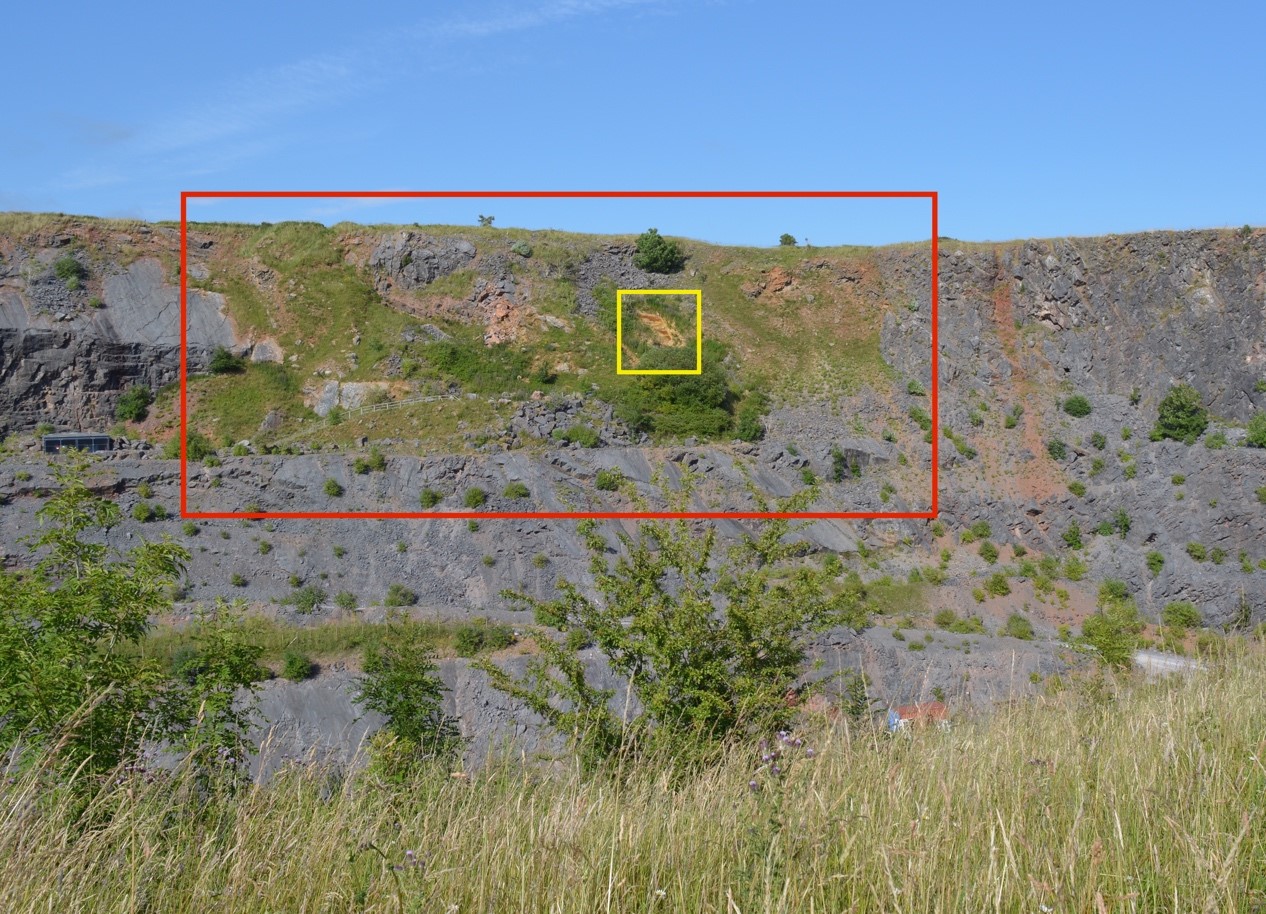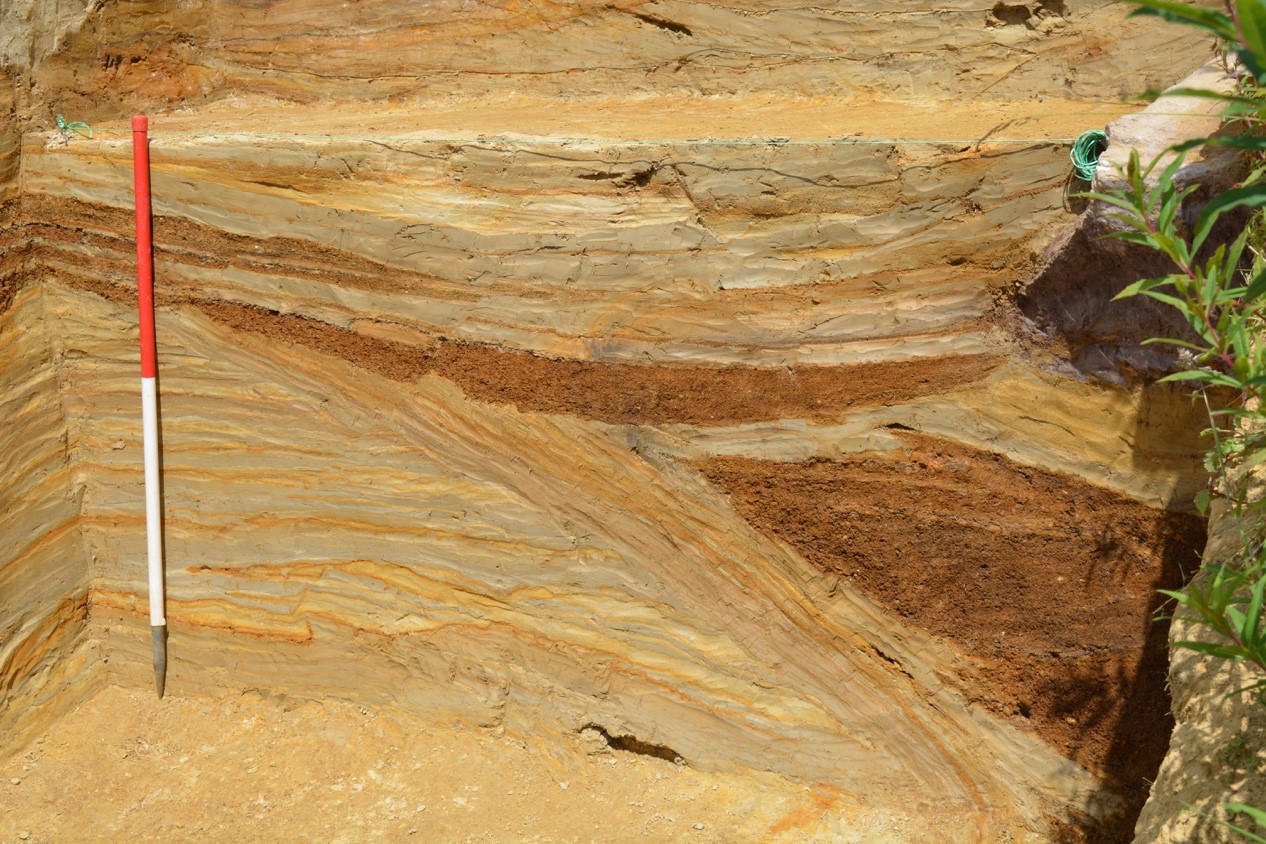After some fabulous blog posts from our MSc students over the last couple of months, our next contribution is from Neil Adams. Neil is a former undergraduate student at Royal Holloway and since graduating in 2015 has been working as a Research Assistant under the tutelage of Professor Danielle Schreve. Hope you enjoy this really nicely illustrated piece that Neil has compiled which gives a fantastic insight into the ongoing work at Westbury Cave.

Name: Neil Adams
Role: Research and Laboratory Assistant, Palaeoecology Laboratory, CQR
For the past year I have been lucky enough to work as a research and laboratory assistant in the Palaeoecology Laboratory, a key facility in the Centre for Quaternary Research at Royal Holloway. The majority of my time has been spent processing samples for mammalian fossils from sites across Britain. These sites have not only covered a diversity of ages through the Quaternary, from the Early and Middle Pleistocene to the Late Pleistocene and Holocene, but also a diversity of depositional environments, including fluvial and cave sites.
One of these sites, Westbury Cave in the Mendip Hills of Somerset, southwest England, was the focus of my undergraduate dissertation research at Royal Holloway in 2014-15, supervised by Prof. Danielle Schreve and Prof. Ian Candy. Westbury Cave is an unusual cave site, given that it was exposed when limestone blasting in Westbury Quarry blasted away most of the south wall of the cave in 1969! This revealed a cross-section through the Pleistocene cave sediments, but the palaeontological importance of the site was only realised when large mammal bones started turning up in the quarry crushing plant! The present exposure of cave sediments is over 30 metres high and 100 metres wide, which attests to just how enormous this subterranean cave system must have been before being occupied by ice age beasts and being filled with sediment during the Pleistocene.

The northeast face of Westbury Quarry (part of the Brimble Pit and Cross Swallet SSSI), the red box highlighting the exposed Pleistocene cave sediments that have been mostly covered by vegetation since quarrying operations ceased in 2003, the yellow box showing the location of the new section exposed during 2014 excavations. Photo: N. Adams.
The site is best known for its early Middle Pleistocene cave breccias (the ‘Calcareous Member’) that are spectacularly fossiliferous, with over forty vertebrate species, as well as disputed flint artefacts, discovered during original excavations in the 1970s-80s. These fossils provide a detailed record of multiple climatic oscillations and environmental changes during this period. However, the underlying Early Pleistocene silts, sands and gravels (the ‘Siliceous Member’) had historically received much less attention. New excavations of these largely unexplored and under-researched sediments in summer 2014 revealed a new assemblage of mammalian fossils, which has turned out to be of national importance.
A section of over 7 metres was cut through the Siliceous Member over four weeks in June and July 2014 to study its sedimentology, to take bulk samples for the recovery of vertebrate fossils, and to take samples for palaeomagnetic dating. Each sediment face was drawn and described in detail to build up a depositional model for the early history of sedimentation in Westbury Cave. Clast lithology of gravel clasts helped reveal where the sediment had originated from, and particle size analysis aided the interpretation of depositional processes. Larger fossils were recorded in situ during excavation, but over 720 kilograms of sediment samples were taken back to Royal Holloway for processing to recover small vertebrate fossils, which are often too small to notice by eye during excavation in the field.

One of six sediment faces exposed during excavations in summer 2014, clearly demonstrating the complexities of cave sedimentology. Striking angular unconformities, faulting, soft-sediment deformation structures, and lateral variation – just a few of the features to interpret! Photo: N. Adams.
The newly discovered fossils were used to produce biostratigraphical age estimations and palaeoenvironmental reconstructions. Palaeoecological preferences of the Siliceous Member taxa suggested that temperate climatic conditions prevailed in southwest England around a million years ago, with herbaceous savanna-like environments (for grazers and scavenging carnivores) surrounded by areas of more open woodland or forest (for browsers and mixed feeders). The fossil bones and teeth were identified to six mammalian families, including both small mammals (several rodent families) and large mammals (bovines, deer, and hyaena). A combination of biostratigraphy, palaeoecology and palaeomagnetic dating suggested that the Early Pleistocene sediments at Westbury represent a previously unknown time interval in British stratigraphy, since a notable lack of palaeontological sites has been recognised across Britain between ca. 1.8 and 0.8 million years.

Examples of fossils discovered during 2014 excavations: on the left, a bovid lower molar belonging to a species of Leptobos; in the centre, a deer first incisor; on the right, a vole lower molar. These fossils are well preserved with little evidence of abrasion from transport and the roots are intact in the first two examples. Scales, from left to right, are 10mm, 10mm, and 2mm. Photos: N. Adams.
Given the limited extent of excavations in 2014 and the significance of the findings, there was scope to recover further palaeontological, sedimentological and geochronological data from the Siliceous Member at Westbury Cave. Grant funding from the Palaeontological Association has enabled work to continue at the site this year. Excavations re-commenced in April 2016 for three weeks, uncovering a new section through the cave deposits. Fossils of at least four mammalian families new to the site (some of which are new records for Britain in the Early Pleistocene) were discovered in the field and over half a tonne of additional bulk sediment samples were taken to recover small vertebrate remains. These new fossils will help to improve the previous palaeoenvironmental reconstructions and to refine the biostratigraphical age estimates.

Excavation in progress in April 2016, bulk sampling a steeply dipping gravel unit. Photo: N. Adams.

Nothing stands in the way of a good section drawing! Photo: D. Schreve.
Attempts to provide absolute age estimates for the Siliceous Member by dating the sediments are also underway. Samples for coupled electron spin resonance and uranium-series (ESR/U-series) dating are currently being analysed by colleagues at the Muséum National d’Histoire Naturelle in Paris, and cosmogenic nuclide burial dating will also be employed following recent grant funding from the Quaternary Research Association. This is the first time absolute dating has been attempted at an Early Pleistocene site in Britain and, if successful, will provide important tests for the biostratigraphical age estimations.

A gamma spectrometer taking in situ dosimetry measurements of the Siliceous Member sediments for ESR dating. Photo: N. Adams.
With taxonomic work on the fossils ongoing and with hundreds of kilograms of samples still to process and sort meticulously in the lab for small vertebrate fossils (down to half a millimetre in size), a lot of work remains to be done. But the results of the work so far are currently being prepared for publication, so you will be able to read more about our work at Westbury Cave very soon!


Fascinating read. Thank you Neil and Royal Holloway for your excellent continued work! All the best, Katherine